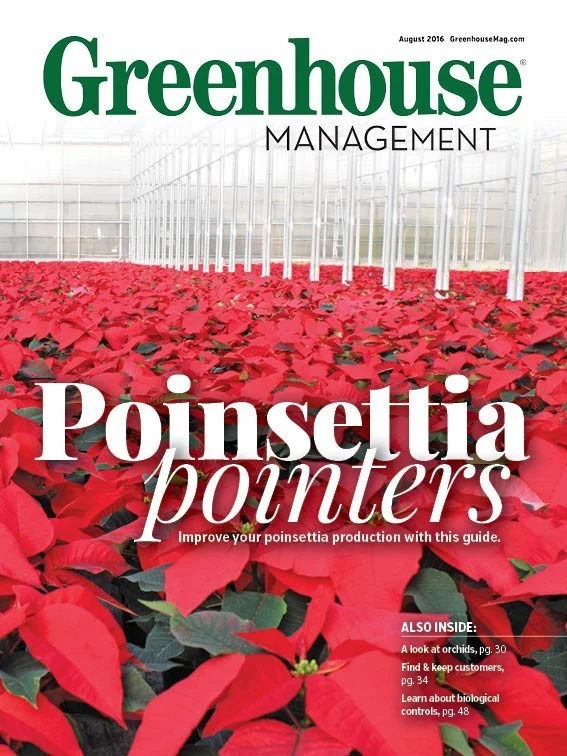



Powdery mildew on poinsettia develops prolifically under greenhouse conditions. Symptoms continue to develop in interiorscapes, so tight control during production is essential. The grainy white spots alarm the customer. Because the disease is not encountered by every grower every year, monitoring is the key feature of IPM for this disease. Growers should keep an eye out for pale yellow leaf spots with diffuse margins. White mildew colonies may be found on the undersurface of the leaf opposite these spots. If unsure, get a lab confirmation of the diagnosis, and attempt to eradicate the disease by placing infected leaves or whole plants directly into plastic bags at the bench. Then protect the remainder of the crop in that greenhouse (or, better yet, on the whole premises) with fungicide sprays for the remainder of the season. Be particularly alert for symptoms in the fall, once greenhouse temperatures are 86°F or below, as cooler temperatures allow rapid epidemic development. The conidia are unavoidably moved about when air is circulated in the greenhouse, but this air movement is essential to prevent the conditions that help Botrytis blight and powdery mildew to thrive.

Explore the August 2016 Issue
Check out more from this issue and find your next story to read.
Latest from Greenhouse Management
- Anthura acquires Bromelia assets from Corn. Bak in Netherlands
- Top 10 stories for National Poinsettia Day
- Langendoen Mechanical hosts open house to showcase new greenhouse build
- Conor Foy joins EHR's national sales team
- Pantone announces its 2026 Color of the Year
- Syngenta granted federal registration for Trefinti nematicide/fungicide in ornamental market
- A legacy of influence
- HILA 2025 video highlights: John Gaydos of Proven Winners





